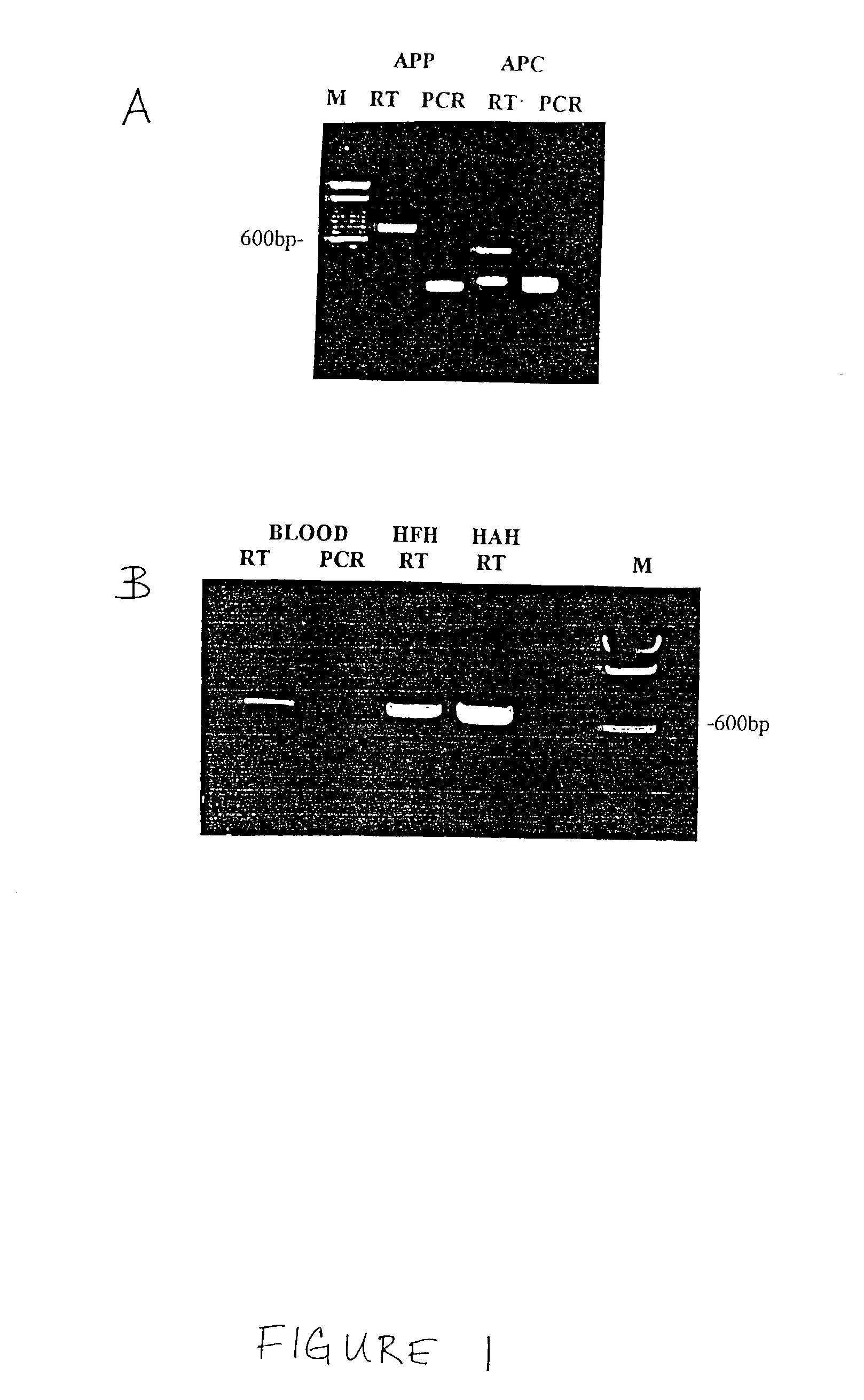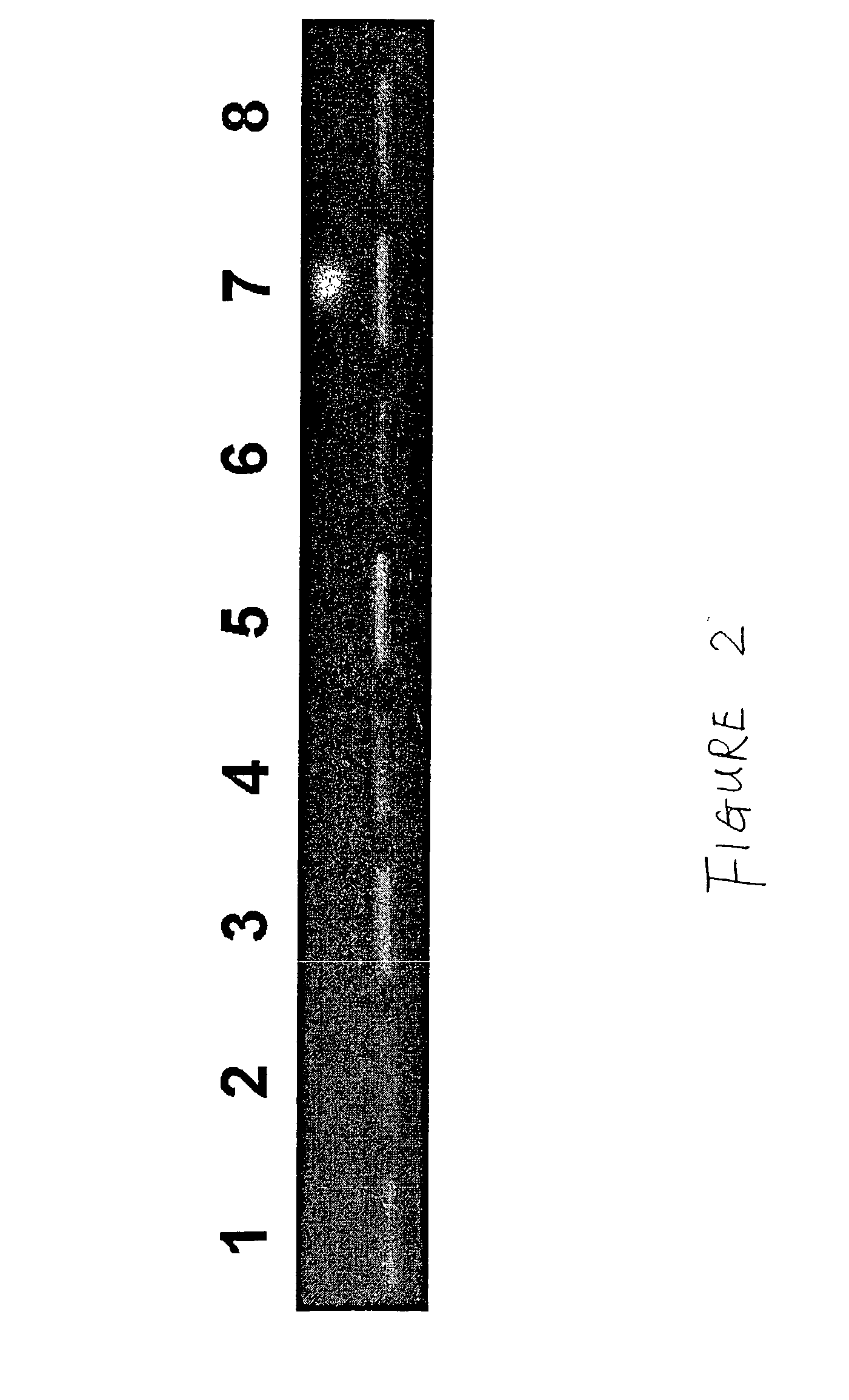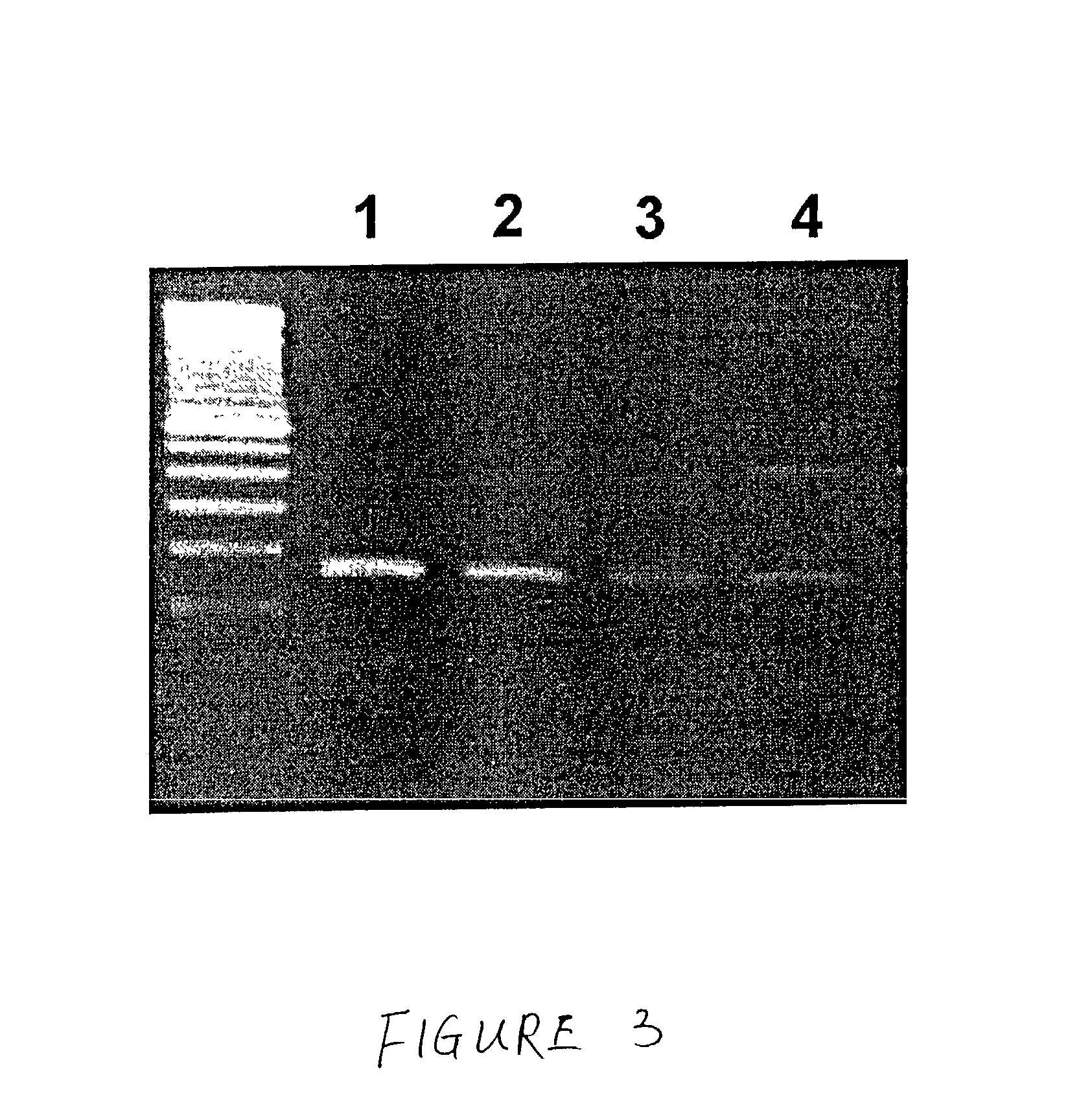Method for the detection of gene transcripts in blood and uses thereof
a gene transcript and blood technology, applied in the field of blood gene transcript detection, can solve the problems of insufficient non-invasive screening methods for tissue-specific diseases in the prior ar
- Summary
- Abstract
- Description
- Claims
- Application Information
AI Technical Summary
Problems solved by technology
Method used
Image
Examples
example 2
[0043] Catalogue of Blood Cell ESTs
[0044] Random partial sequencing of expressed sequence tags (ESTs) of cDNA clones from the blood cell library was carried out to establish an EST database of blood. The known genes as derived from the ESTs were categorized into seven major cellular functions (Hwang, Dempsey et al., 1997).
example 3
[0045] Differential Screening of cDNA Library
[0046] cDNA probes generated from transcripts of each tissue were used to hybridize the blood cell cDNA clones (Liew et al., 1997). The "positive" signals which were hybridized with .sup.32P-labelled cDNA probes were defined as genes which shared identity with blood and respective tissues. The "negative" spots which were not exposed to .sup.32P-labelled cDNA probes were considered to be blood-cell-enriched or low frequency transcripts.
example 4
[0047] Reverse Transcriptase-Polymerase Chain Reaction (RT-PCR) Assay
[0048] RNA extracted from samples of human tissue was used for RT-PCR analysis (Jin et al. 1990). Three pairs of forward and reverse primers were designed for human cardiac beta-myosin heavy chain gene (.beta.MyHC), amyloid precurser protein (APP) gene and adenomatous polyposis-coli protein (APC) gene. The PCR products were also subjected to automated DNA sequencing to verify the sequences as derived from the specific transcripts of blood.
PUM
| Property | Measurement | Unit |
|---|---|---|
| mass spectrometry | aaaaa | aaaaa |
| time | aaaaa | aaaaa |
| size | aaaaa | aaaaa |
Abstract
Description
Claims
Application Information
 Login to View More
Login to View More - R&D
- Intellectual Property
- Life Sciences
- Materials
- Tech Scout
- Unparalleled Data Quality
- Higher Quality Content
- 60% Fewer Hallucinations
Browse by: Latest US Patents, China's latest patents, Technical Efficacy Thesaurus, Application Domain, Technology Topic, Popular Technical Reports.
© 2025 PatSnap. All rights reserved.Legal|Privacy policy|Modern Slavery Act Transparency Statement|Sitemap|About US| Contact US: help@patsnap.com



